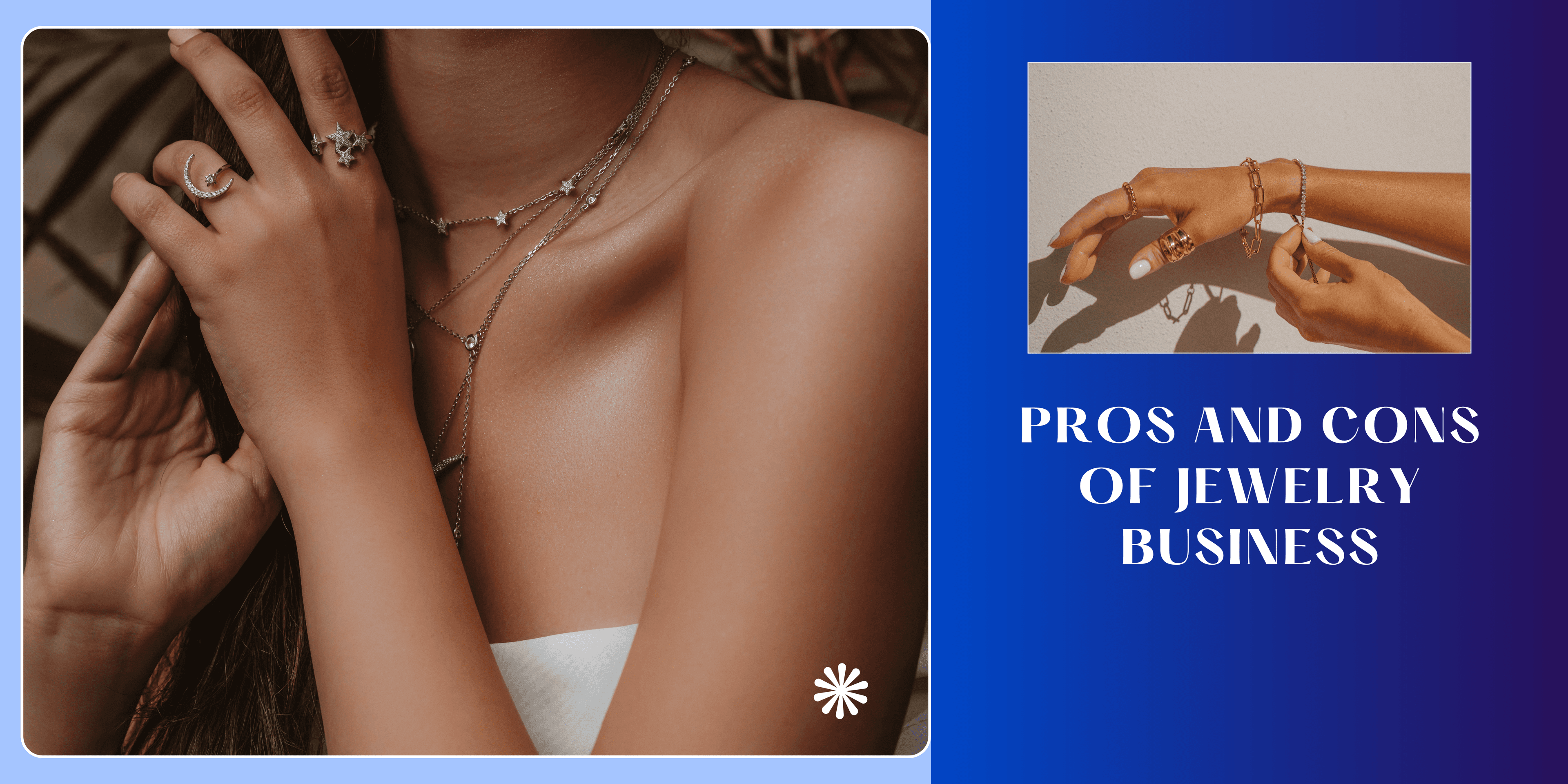
Discover creative and effective social media content ideas to engage your clients, increase brand visibility, and boost your jewelry business sales.
In the crowded world of social media, jewelers face the challenge of standing out in a sea of stunning visuals. To help you elevate your online presence, CaratIQ has designed this detailed guide full of social media content ideas for jewelry businesses that will have your brand sparkling across every platform.
Why Social Media Marketing is So Important for Jewelry Brands
Online visibility is vital for jewelry brands looking to scale and reach new audiences. Thankfully, social media marketing allows jewelry businesses to interact with customers where they spend most of their time: on social networks like Instagram, TikTok, and Facebook.
With a solid social media marketing strategy, you can advertise your jewelry to a wider customer base, and build lasting, profitable relationships with those customers.
For example, content marketing (one branch of social media marketing) focuses on providing thoughtfully crafted content—from styling tips to testimonials—that helps customers connect to your brand on a deeper level.
This connection encourages repeat purchases, word-of-mouth recommendations, and long-term loyalty, which is exactly what’s needed to fuel your growth.
Top 5 Social Media Platforms for Your Jewelry Business (+ Content Ideas for Each)
Choosing the right social media platforms can make a world of difference in how your brand reaches potential customers. Here’s a breakdown of the pros/cons of today’s top social media sites, along with social media content ideas for jewelry businesses tailored to help you shine.
1. Instagram for jewelry businesses
Instagram’s highly visual nature helps jewelry brands promote the beauty and detail of their pieces through photos, videos, and Stories. In addition, Instagram’s hashtags and diverse user base make it easy to target niche audiences.
The best part? With features like Instagram Shopping and Reels, you can create a seamless experience for users to discover and purchase your products without leaving the app.
Cons: Instagram’s algorithm makes it difficult for posts to gain organic visibility without consistent engagement or paid promotion.
Content ideas for Instagram
Behind-the-scenes Stories: Share the craftsmanship and creative process behind each piece, from initial sketches to the final product.
Styling tips with Reels: Post quick Reels showing how to style your jewelry with different outfits or for different occasions.
Customer spotlights: Feature user-generated content from customers and influencers wearing your jewelry, as a way to add social proof.
2. TikTok for jewelry businesses
TikTok allows jewelers to connect with a younger and trend-driven audience via short, entertaining videos. The TikTok algorithm helps content go viral very quickly—making it possible for smaller brands to gain massive exposure and attract new customers overnight.
Better yet, TikTok’s sound trends, challenges, and visual effects provide endless creative opportunities to show off your products in fun and relatable ways.
Cons: Creating daily, original content that resonates with TikTok’s young audience (and ever-changing trends) can be time consuming.
Content ideas for TikTok
Day in the life of a jewelry maker: Film day-to-day jewelry making tasks, offering a firsthand look at designing, crafting, packaging, etc.
Trend challenges: Participate in popular TikTok challenges, creatively incorporating your jewelry to tap into viral trends.
Unboxing reactions: Post user-generated unboxing videos and reactions, showcasing customers’ excitement over your new pieces.
3. Facebook for jewelry businesses
Facebook is an essential part of any marketing strategy, as tools like Shops and Marketplace let you sell products directly to customers. Features like Groups and Events also help you create a sense of community, by hosting virtual sales or promoting in-person events.
On top of that, Facebook’s ad options allow you to target specific demographics and behaviors. This increases the relevance of your marketing, leading to higher engagement.
Cons: Organic reach on Facebook now requires paid ads to be effective. Also, Facebook’s users skew a bit older, which is an issue if your intended audience is Gen Z.
Content ideas for Facebook
Virtual jewelry showcases: Host live-streamed events to introduce new collections and create a real-time shopping experience.
Customer testimonials: Share positive reviews or customer stories, adding credibility and helping build trust with potential buyers.
Exclusives for VIPs: Form a private Facebook group to give VIP customers early access to new pieces and special discounts.
4. Pinterest for jewelry businesses
Pinterest is a well-loved global platform that’s often used for finding new products. With Pinterest, you can organize themed boards (think: ‘Wedding Jewelry’ or ‘Everyday Style’) to inspire customers and demonstrate the versatility of your pieces.
Another perk is that your pins have a long shelf life. Meaning, your content continues to be discoverable and drive engagement months after posting.
Cons: While Pinterest sees a lot of traffic, converting that traffic into sales requires strong landing pages and a cohesive ecommerce experience.
Content ideas for Pinterest
Seasonal lookbooks: Create boards related to seasonal styles, such as ‘Fall Jewelry Trends’ or ‘Holiday Party Accessories.’
Style guides: Pin graphics that show how to style products with different outfits, making it easy to imagine wearing your designs.
Gift idea boards: Curate boards for gift-giving occasions like ‘Birthday Gifts Under $100’ for Pinterest users seeking ready-made ideas.
5. Blogs for jewelry businesses
Blogs are an ideal outlet for sharing personal stories, testimonials, and style tips to increase the depth of your online presence. Through SEO-optimized blog posts, you can attract organic traffic from search engines, reach new audiences, and drive customers to your site.
Blogging also provides an opportunity to educate readers about trends, materials, and jewelry care, establishing your brand as a trusted source of information.
Cons: Growing a blog’s search engine ranking takes considerable time, so it might be a slower path to sales compared to other social media platforms.
Content ideas for blogs
Trend reports: Write posts highlighting upcoming trends (i.e. ‘Top Jewelry Trends for 2025’) to pull in customers looking for style inspiration.
Jewelry care tips: Make a how-to guide on caring for specific materials, like cleaning gold or storing gemstones safely.
Brand story: Share the origin story of your brand, including the founder’s background and any obstacles they faced along the way.
🔥 Tip: CaratIQ’s ecommerce Website Module has everything you need to create a professional online storefront to sell products, streamline transactions, and host your blog.
Creating a Consistent Brand Voice Across Social Media
Maintaining a consistent brand voice across all social media channels is crucial for building recognition and trust with your audience.
That’s why whichever social media content ideas for jewelry businesses you implement should be consistent with your unique selling proposition (USP)—whether that’s sustainable materials, artisan craftsmanship, or modern, minimalist designs.
Consistency doesn’t mean every post needs to look exactly the same. Instead, it means that each photo, caption, or blog clearly communicates your brand’s values and aesthetic.
Keeping your visuals and messaging consistent on all posts and platforms helps reinforce your brand's identity. This creates a more memorable (and trustworthy) brand image that differentiates your business from the competition.
Measuring the Success of Your Social Media Content Strategy
To gauge the success of your social media marketing, you can track a few key metrics for your Instagram, TikTok, Facebook, and Pinterest. These metrics include: likes, shares, comments, and follower growth. As for blog analytics, you’ll want to pay attention to page views, time on page, and bounce rates.
Together, these metrics provide a clear picture of audience interest and retention. Once you know how well your socials are doing, you can take steps to improve their performance.
For starters, you can look for patterns in engagement and conversions, such as which posts lead to website visits or product purchases. If certain types of content outperform others, you can adjust your social media strategy to prioritize those high-ranking formats/topics.
Regularly testing and reviewing your social media analytics helps you stay responsive to your audience’s preferences—making your content more impactful, and more aligned with your business goals.
Read Also:
Jewelry Marketing Strategies to Help Your Business Grow
Jewelry Ads That Work: Proven Strategies for Success
Engaging Instagram Captions for Your Jewelry Business: Inspire, Connect, and Sell
How to Grow Your Jewelry Business on TikTok: A Complete Guide
Jewelry Slogan Ideas: Creating Memorable Taglines That Shine

You may also like
View all

